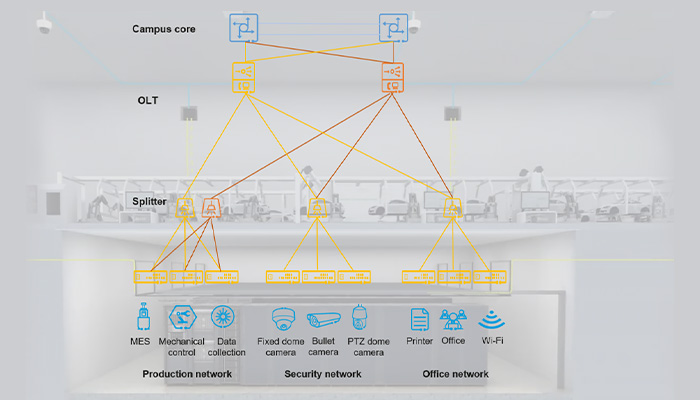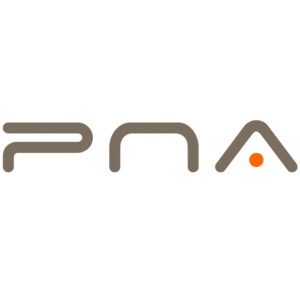For the industrial zone network, “Optical entry” is an evolutionary road based on “all optical”. In the face of the once-in-a-decade opportunity, if you don’t advance, you will retreat, and if you don’t enter, you will exit.
In 1861, Britain promulgated a “Red Flag Law”, which stipulates that cars are strictly forbidden to whistle. When cars meet carriages on a narrow road, cars must make way for carriages.
In the early days of these industrial civilizations, the “cognitive gap” caused by old common sense soon disappeared in the dust of history with the roar of industrial civilization and ruthlessly run over by the wheels of the times.
The mechanization of the industrial field replaces manual work and is gradually replaced by automation; in the field of communication, telephones replace telegraphs, and touch-type smartphones replace button-type traditional mobile phones…
We find that the change of every era follows the principles of productivity evolution. This time, the new “productivity” innovation is in the field of zone network.
On July 5, Huawei officially released the “Optic enters, copper retreat” avant-garde action of the Industrial zone network. Chen Banghua, president of Huawei’s optical product line, said at the meeting that with the acceleration of the Wi-Fi 7 era, the Industrial zone network “Optic enters, copper retreat” is imperative, and the Quanguang park is becoming the new standard for the digital intelligent zone.
Historical new opportunities for the Industrial Zone network
The Industrial zone network is facing great changes that have not been seen in a decade.
Whether it is wireless network or fixed network, connection technology is developing rapidly. In November 2023, ETSI released a document formally defining the F5G Advanced intergenerational standard, and optical fiber from home to park, to factory and machine. Therefore, from the perspective of technical iteration, the evolution of the park network to all-light itself is an intergenerational replacement.
From the perspective of business, with the normalization of enterprises on the cloud, data transmission between enterprises and cloud platforms has begun to occupy the main proportion of the Industrial zone network. The data transmission between the park and the cloud will become larger, and the traditional Industrial zone network will be under great traffic pressure. Only by moving towards the all-optic network can we meet the growing traffic needs of enterprises.
At the same time, the opening of the digital intelligent transformation of enterprises has made intelligence ubiquitous due to applications. The rapid popularization of intelligent applications has brought a large amount of data to the Industrial zone network, resulting in a flood of data that is difficult for the traditional Industrial zone network to resist.
Chen Banghua also said that the digital intelligence transformation of the industry has put forward higher requirements for data perception and transmission. For example, the AI-assisted reading of hospitals, VR teaching in schools and other scenarios put forward dozens of times more requirements for the bandwidth and number of connections of the Industrial zone network.
There is also a debate about scientific and technological innovation and high energy consumption, so that the concept of green and low-carbon must go in side with digital intelligence. The traditional park not only has high energy consumption, but also complex network wiring and operation and maintenance will bring long-term cost expenditure, which makes the greener and easier-to-maintain all-opectal network have more space for display and the reason to be chosen by the zone.
If you imagine the future, the network connection is extremely rich, and a large number of IoT devices access the network, such as the campus network, is such a typical scenario. The complex network architecture formed by a variety of terminal systems and a large number of terminal equipment will also bring new challenges to the traditional Industrial zone network.
No matter from any perspective, the “Optic advance and copper retreat” of the Industrial zone network is an irreversible trend.
As Chen Banghua said, in the era of Wi-Fi 7, the Industrial zone network is imperative. Huawei hopes to work with customers and partners to seize this once-in-a-lifetime opportunity. Based on the F5G all-opt zone 2.0 solution, Huawei hopes to provide customers with a ubiquitous 10 Gigabit experience in education, medical care, hotels, factories and other scenarios, and win-win new future!
Changes in the four major scenes, the transition of productivity brought by all optic
Whether any technological change can become the mainstream of the industry depends on the value of the scene.
The combination of the Industrial zone network and the industry also leads to different zone scenarios. For example, schools, hospitals, hotels and factories are the most typical zone network application scenarios. Can Huawei F5G all-light zone 2.0 solution bring productivity jumps to customers in four typical scenarios?
First of all, let’s take a look at the campus network. With the in-depth development of digital intelligence of education, the campus network faces many challenges in terms of bandwidth, network construction cost and network evolution. For example, in the traditional campus network, wired, wireless and telephone networks need to be accessed independently, and the cost is very high. Now a Huawei Wi-Fi 7 optical terminal W8271 can carry these three kinds of services, reducing the cost by 30%.
In addition, the traditional campus network has to transform the network every 3-5 years, causing complex network construction, operation and maintenance difficulties. Optical fiber access not only has 10 times the bandwidth of copper wire, but also can achieve no change of lines in the next 30 years, which has an obvious advantage in the long-term evolution of the campus network.
Judging from the integrated wiring, in the past, each classroom needed to pull 8 50-meter network cables from the weak current room, and the total length of the network cable on one floor was as high as 8,000 meters. Based on the F5G all-optical campus scheme, you only need to pull 1 optical fiber to the indoor optical terminal to save 80% of the wiring.
Let’s take a look at the reception scene in the medical industry. The traditional hospital network is 100 megabytes to the desktop. It takes a long time for doctors to load when viewing images, which affects the efficiency of reception. Based on the all-optical scheme from optical fiber to the room, the bandwidth is increased by 100 times. When reading the film, the image can be loaded in seconds, and the reception efficiency can be greatly improved by more than 50%.
In the room inspection scene, the problem of wireless network roaming and packet loss in the ward occurs from time to time. The PDA terminal of the mobile room inspection usually has a probability disconnection, resulting in the average time of each patient’s room inspection time of nearly 5 minutes. The zero roaming technology of Huawei’s F5G all-otus hospital solution can ensure that the terminal is always online and improve the efficiency of room inspection by 60%.
The logic of the hotel network scene is very simple, that is, the consumer’s experience, the Internet speed is fast, the service response is not timely, and it is necessary for the hotel to build a high-speed and easy-to-maintain network. Huawei F5G all-optical hotel solution allows optical fiber to go directly to the guest room, realizing one room, one fiber and one terminal, thus simplifying the network architecture, operation and maintenance, and achieving low network construction costs. Not only can the cable be saved by 80%, but the construction cycle can also be reduced by 50%, and a single optical network can be realized, which supports multiple services. The mutual isolation between various businesses is realized through hard isolation slicing, but the unified management of all equipment reduces the operation and maintenance cost by 50%.
Finally, there is the industrial network scenario. The most typical requirement is the reliability of the network to reduce the occurrence of network failures. Huawei pioneered the PON link dual-channel selection technology in the F5G all-light factory scheme, with two paths to realize transmission, truly achieving zero business interruption. At the same time, in terms of operation and maintenance, in the past, each switch in the workshop had to be deployed and configured one by one. The operation and maintenance was complex. Huawei ONT supports plug-and-play, swap-and-use. All ONUs only need two OLT centralized management, which greatly reduces the management nodes and can realize the management of a factory network by one person.
A world-shaking change, if you don’t enter, you will be out.
From the above four major zone networks, it is not difficult to find two key points.
The “all-optic” network in each scene will bring a clear efficiency improvement. These real figures are the productivity transition brought about by the “light into copper retreat” of the zone network.
Second, Huawei F5G all-light campus 2.0 solution goes deep into each scene. From the perspective of business, all-light gives the network a higher value, and “all-optic” shines on the future evolution of the zone network.
Judging from the overall trend of the development of the zone network, the wave of digital intelligence transformation is surging, the number of intelligent terminals has doubled, and the audio and video traffic is increasing at a rate of 30% per year. In 2025, 80% of the applications will be clouded. The zone network can no longer tolerate “gradual” optimization, an earth-shaking change. It is bound to happen.
And the all-optical network can bring about such a change. Optical fiber itself has the characteristics of large bandwidth, long service life, and green environmental protection. One-time wiring has 30 years of worry-free, which is the value of the park/zone network that cannot be rejected.
In addition, the traditional zone network also has a long-term hybrid deployment of multiple networks, which makes the zone network more complex; there are long-term challenges such as the problem of relying on the pile of people for operation and maintenance and the difficulty of locating faults, all of which users can find a solution in the Huawei F5G All-Optic Park 2.0 solution.
Therefore, “optic progress” is an evolutionary road based on “all optic” for the zone network. In the face of a once-in-a-decade opportunity, if you don’t advance, you will retreat, and if you don’t enter, you will be out.


